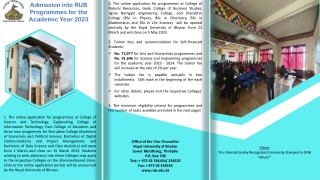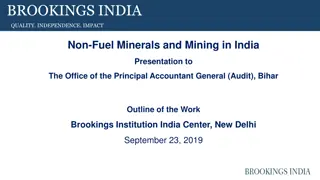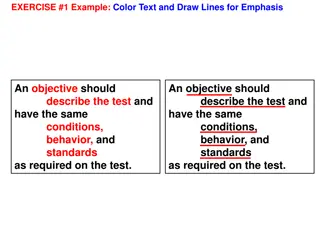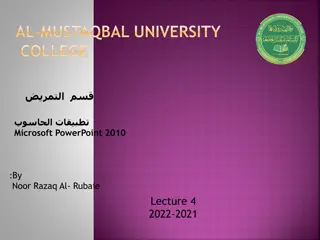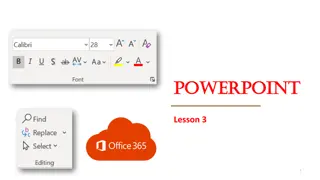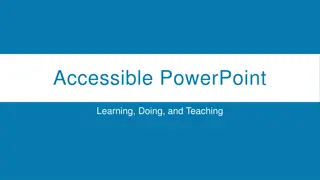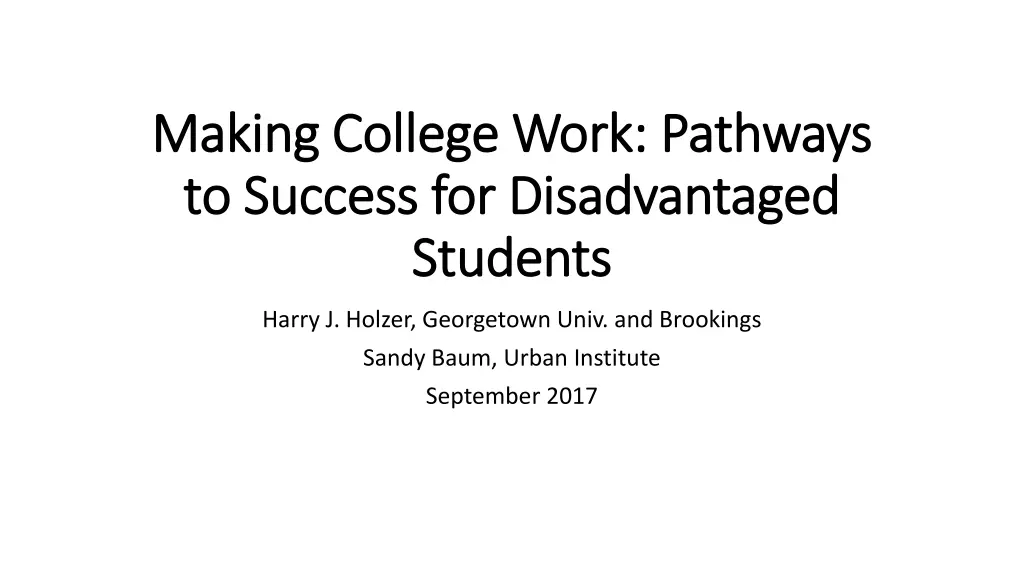
Success Strategies for Disadvantaged College Students
Discover the primary challenges disadvantaged students encounter in higher education and the workforce, along with potential policy solutions. Explore issues of completion rates, labor market value, and student debt. Uncover insights on student attainment by income and age groups.
Download Presentation

Please find below an Image/Link to download the presentation.
The content on the website is provided AS IS for your information and personal use only. It may not be sold, licensed, or shared on other websites without obtaining consent from the author. If you encounter any issues during the download, it is possible that the publisher has removed the file from their server.
You are allowed to download the files provided on this website for personal or commercial use, subject to the condition that they are used lawfully. All files are the property of their respective owners.
The content on the website is provided AS IS for your information and personal use only. It may not be sold, licensed, or shared on other websites without obtaining consent from the author.
E N D
Presentation Transcript
Making College Work: Pathways Making College Work: Pathways to Success for Disadvantaged to Success for Disadvantaged Students Students Harry J. Holzer, Georgetown Univ. and Brookings Sandy Baum, Urban Institute September 2017
Overview Overview What are the primary problems disadvantaged students face in higher education and the labor market? What causes those problems? What policy and programmatic changes are most promising to address these problems? Both supports for individual students and institutional reforms are necessary. Broad takeaways: Resources, incentives, and realism The challenge of improving outcomes while keeping opportunities open
Three central problems Three central problems Enrollment has increased but completion of degrees and credentials lags behind. Too many degrees and credentials earned lack labor market value. Too many disadvantaged students accumulate heavy debt while not receiving credentials with value.
Who completes? Who completes? Attainment after six years by dependent student Attainment after six years by dependent student family income family income Attained bachelor's degree Attained associate's degree Attained certificate No degree, still enrolled No degree, not enrolled $92,000 or more (16%) / (23%) 59% 7% 2% 12% 19% $60,000-$91,999 (17%) / (24%) 45% 10% 4% 14% 27% $32,000-$59,99 (19%) / (26%) 36% 11% 7% 16% 30% Less than $32,000 (19%) / (27%) 26% 9% 10% 17% 38% 0% 10% 20% 30% 40% 50% 60% 70% 80% 90% 100% Note: First percentage is percentage of all undergraduate students. Second percentage is percentage of dependent students.
Who completes? Who completes? Attainment after six years by age at enrollment Attainment after six years by age at enrollment Attained bachelor's degree Attained associate's degree Attained certificate No degree, still enrolled No degree, not enrolled 30 or older (13%) 4% 10% 18% 13% 55% 24 to 29 (8%) 6% 10% 20% 14% 51% 20 to 23 (13%) 10% 10% 14% 19% 46% 19 or younger (67%) 43% 9% 6% 15% 28% 0% 10% 20% 30% 40% 50% 60% 70% 80% 90% 100%
Who completes? Who completes? Attainment after six years by first enrollment sector Attainment after six years by first enrollment sector Attained bachelor's degree Attained associate's degree Attained certificate No degree, still enrolled No degree, not enrolled Other (2%) 5% 10% 43% 7% 35% For-Profit (13%) 4% 10% 31% 10% 46% Public Two-Year (43%) 12% 14% 8% 20% 46% Public Four-Year Nondoctorate-Granting (10%) 47% 6% 2% 14% 30% Public Four-Year Doctorate-Granting (17%) 67% 2% 1% 12% 17% Private Nonprofit Four-Year Nondoctorate-Granting (5%) 59% 4% 1% 13% 23% Private Nonprofit Four-Year Doctorate-Granting (5%) 75% 3% 2% 8% 13% All 31% 9% 9% 15% 35% 0% 10% 20% 30% 40% 50% 60% 70% 80% 90% 100%
What do students study? What do students study? Majors at Public Two-year Institutions 50 47% 40 Percentage (%) 30 24% 20 13% 10% 10 6% 0 Undeclared STEM Humanities & Social Sciences Declared Major Occupational Other Note: Based on last declared major.
How do degrees pay off? How do degrees pay off? Effects of Higher Education on Earnings: Earnings Premium Relative to High School Graduates 1.2 .99 1 Earnings Premium Relative to 0.8 HS Graduates .71 .59 0.6 0.4 .30 .29 0.2 0 Advanced degree Bachelor's Degree AA AAS / AS Certificate
Financing college Financing college Tuition: community colleges vs. for-profits Student aid: access and complexity Opportunity costs Time to completion
Debt levels of associate degree recipients Debt levels of associate degree recipients No Debt Less than $10,000 $10,000 to $19,999 For-Profit 33% 23% 13% Public Two-Year 24% 25% 20% Total 26% 25% 19% $20,000 to $29,999 $30,000 or More 10% 7% 12% 49% 37% 20% 8% 21% 27% 1% 13% 28% 2003-04 (7%) 2007-08 (14%) 2011-12 (14%) 70% 62% 59% 4% 9% 12% 2% 3% 5% 1% 1% 4% 2003-04 (79%) 2007-08 (70%) 2011-12 (67%) 63% 52% 50% 9% 14% 14% 2% 6% 9% 1% 3% 8% 2003-04 2007-08 2011-12
What causes What causes t these Student characteristics and circumstances Student characteristics and circumstances hese p problems? roblems? Low high school achievement and academic preparation Financial barriers Little information and social capital : Before and after enrolling Full-time work to support families Results: Enrollment in general programs at weak institutions Developmental classes Financial challenges
The transfer issue The transfer issue Ease of transfer vs. labor market value Gap between high expectations and low success (80 v. 14 percent) Balancing short-term and longer-term opportunities
Policy solutions: Better supports for students Policy solutions: Better supports for students Students need much more than money Guiding choices of programs and institutions Reforms in developmental programs Reforms in financial aid (simplification, Pell: non-credit programs, flexible timing ) Other supports including academic and career counseling Evidence from ASAP But expensive and not well-designed for part- time students
What causes What causes t these Institutional characteristics Institutional characteristics hese p problems? roblems? Inadequate resources Weak incentives to respond to labor market High costs of instruction and equipment in high-demand fields Too little structure and guidance for student choices For-Profit issues
Institutional Institutional revenues at public two revenues at public two- -year and four (per full (per full- -time time e equivalent student quivalent student in in 2013 dollars) year and four- -year institutions year institutions 2013 dollars) Federal Appropriations and Federal, State, and Local Grants and Contracts Percentage of Revenues from State and Local Appropriations Net Tuition Revenue State and Local Appropriations Total Revenue per FTE Student Public Four-Year 2003-04 $6,640 $9,010 $7,190 $22,840 39% 2008-09 $7,710 $8,380 $7,110 $23,200 36% 2013-14 $9,740 $7,110 $6,910 $23,760 30% Public Two-Year 2003-04 $2,690 $5,780 $1,640 $10,110 57% 2008-09 $2,840 $5,550 $1,490 $9,880 56% 2013-14 $3,530 $5,210 $1,390 $10,130 51%
Policy solutions: Institutional reforms Policy solutions: Institutional reforms Guided pathways and sector-based training (Need more evidence of success and scaling of successful models) Need for more resources and better incentives (External accountability and internal funding) For-profit regulation Other innovations (Competency-based credentials, MOOCs, etc.)
Better Better p pathways athways s starting in secondary tarting in secondary s school chool CTE and more high-quality pathways to college or career Work-based learning Meeting people where they are
Broad takeaways Broad takeaways No single bullet Broad range of supports and reforms needed targeting both students and institutions Institutions need both better resources and stronger incentives Realism: Help students make better choices Tough tradeoffs

